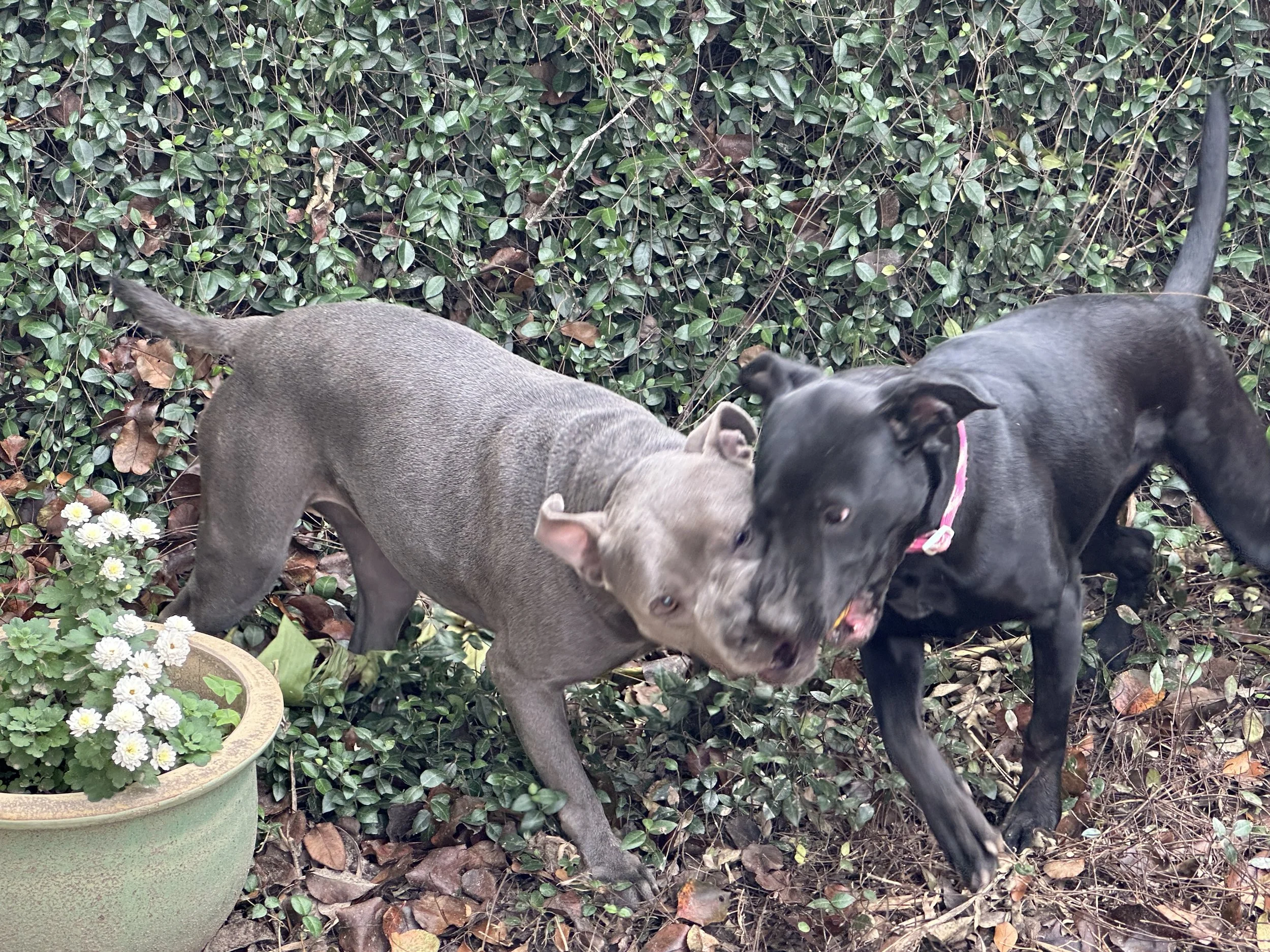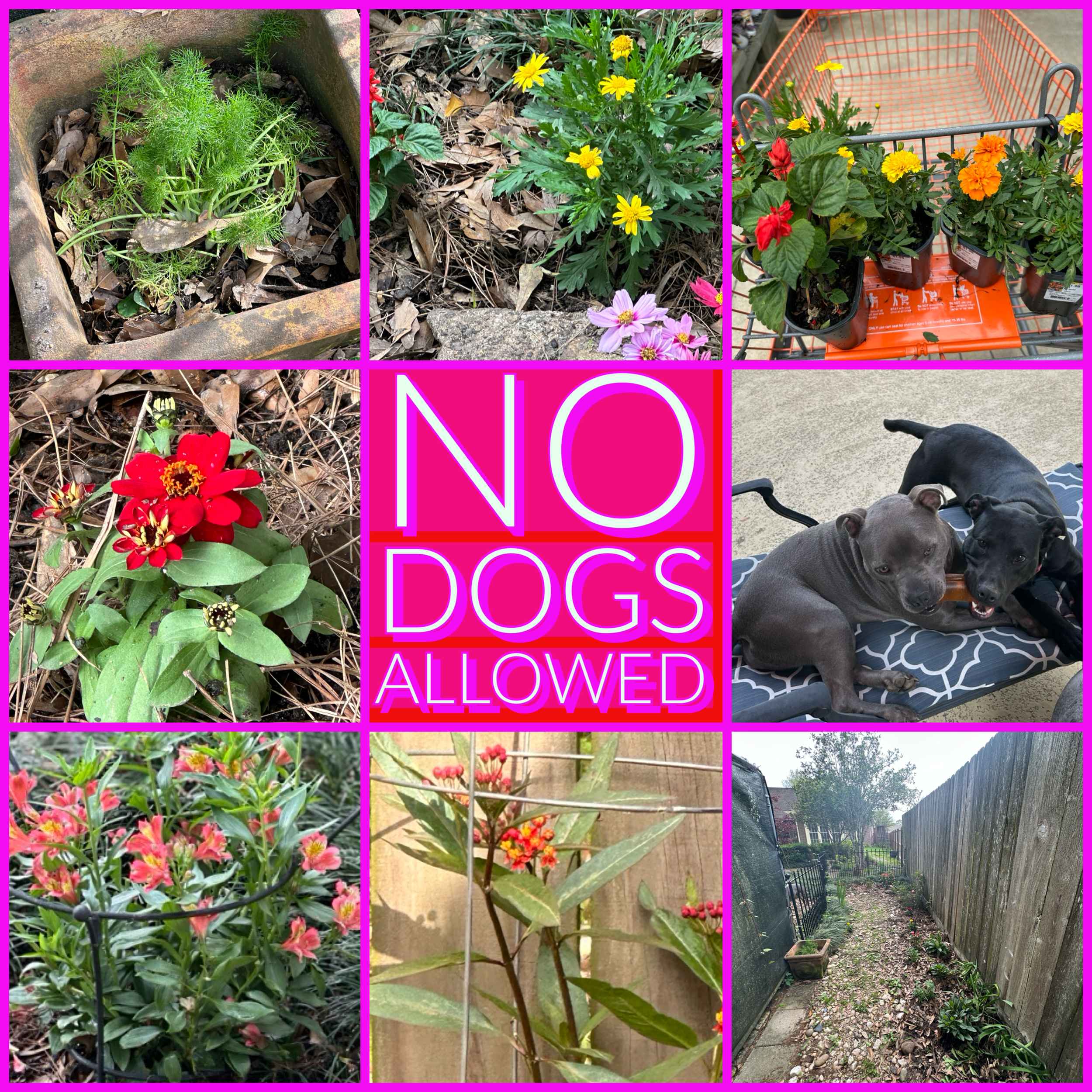Butterfly gardening with a couple of wild dogs
Butterfly gardening with foolhardy dogs like Maze and Malibu is like begging for another emergency vet bill to hit my bank account. They’re klepto-dogs, mouthing everything in sight, from socks that miss the rim of the laundry basket to unused logs from a raised garden bed built summers ago. Who’s jaws are the strongest? Who will win the competitive tug-of-war championship and take home the sock?
My husband and I have staged patio furniture, heavy planters, and lawn ornaments with miles of decorative fencing to keep them out of the flowerbeds, to see it become an obstacle course.
Ten points go to Maze for eating the brand-new rosemary plant and twenty for Malibu. Can she eat the root ball and the container while leaping over the immense rock by the pool to elude Mom with her loot?
Tiring quickly of their chew toys, they decide to lock lips and chew on each other.
Maze, the blue bully (pictured left), Malibu, her younger sibling of unknown breed (pictured right)
Hosting Monarchs is terrifying because the species rely exclusively on Milkweed as a host plant. Monarchs evolved to digest the poisonous plant, but the pack hasn't.
How to host Monarchs
Plant Milkweed in deep containers
Place potted Milkweed in an area inaccessible to dogs
Monitor and remove Milkweed seedpods before they fall and take root in the ground
Continue to supervise the dogs outdoors
Planting a garden to host and attract Monarchs and other pollinators
All of the plants, including the Milkweed (third row, middle picture) are off-limits to the dogs
Try dog-safe plants for a worry-free butterfly garden. Host other species. Play with variety and height. Tall plants provide shade and a haven from predators and extreme temperatures.
Caterpillars nibble herbs, and butterflies sip nectar from flowers.
Passionflower vine is a sun-loving perennial that reaches 50 feet. It hosts and attracts butterflies. The flowers are a great nectar source and boast calming properties for dogs and owners.
Pineapple guava loves sunshine. Flourishes in warm Florida regions. Edible flowers attract butterflies.
Coreopsis (Tickseed), an adaptable flowering perennial, attracts butterflies. Beware, bee allergy sufferers, it's a bee magnet.
Fennel, pineapple sage, and rosemary are dog-safe and loved by caterpillars.
Lantana, the butterfly magnet, is toxic to dogs.

